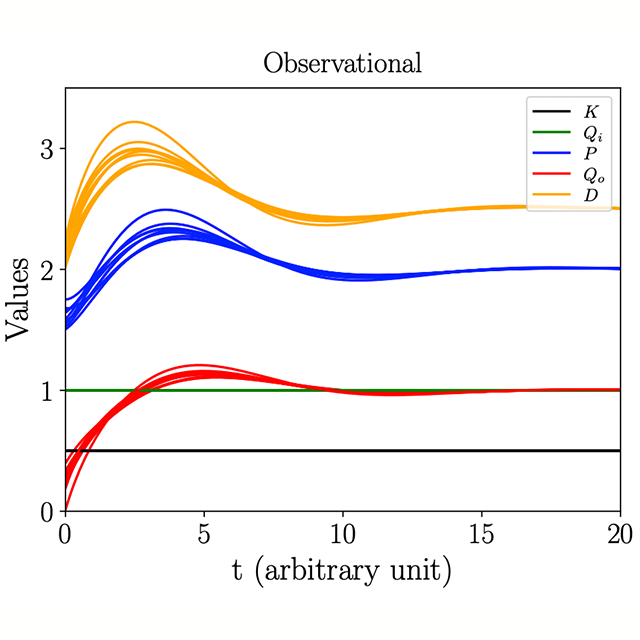Back
Causal Modeling of Dynamical Systems
S. Bongers, T. Blom and J. M. Mooij
Dynamical systems are widely used in science and engineering to model systems consisting of several interacting components. Often, they can be given a causal interpretation in the sense that they not only model the evolution of the states of the system’s components over time, but also describe how their evolution is affected by external interventions on the system that perturb the dynamics. We introduce the formal framework of structural dynamical causal models (SDCMs) that explicates the causal semantics of the system’s components as part of the model. SDCMs represent a dynamical system as a collection of stochastic processes and specify the basic causal mechanisms that govern the dynamics of each component as a structured system of random differential equations of arbitrary order. SDCMs extend the versatile causal modeling framework of structural causal models (SCMs), also known as structural equation models (SEMs), by explicitly allowing for time-dependence. An SDCM can be thought of as the stochastic-process version of an SCM, where the static random variables of the SCM are replaced by dynamic stochastic processes and their derivatives. We provide the foundations for a theory of SDCMs, by (i) formally defining SDCMs, their solutions, stochastic interventions, and a graphical representation; (ii) studying existence and uniqueness of the solutions for given initial conditions; (iii) providing Markov properties for SDCMs with initial conditions; (iv) discussing under which conditions SDCMs equilibrate to SCMs as time tends to infinity; (v) relating the properties of the SDCM to those of the equilibrium SCM. This correspondence enables one to leverage the wealth of statistical tools and discovery methods available for SCMs when studying the causal semantics of a large class of stochastic dynamical systems. The theory is illustrated with examples from different scientific domains.


